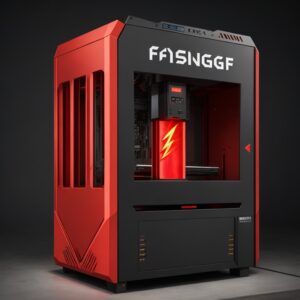FlashForge stands out as a prominent manufacturer, offering a wide range of printers that cater to hobbyists, educators, and professionals alike. Founded in 2011, the company has quickly established itself as a key player in providing accessible, reliable, and innovative 3D printing solutions.
Price Range
FlashForge’s selection of 3D printers varies significantly in price, reflecting the diversity in functionality and user needs. The consumer-grade models, like the FlashForge Finder and FlashForge Adventurer series, often have a price point that ranges from $300 to $500, making them quite affordable for hobbyists and educators. Professional-grade printers like the FlashForge Creator 3 and the FlashForge Guider series can cost upwards of $1,000 to $3,000. These models offer higher-end features that justify the price tag for professional users requiring more precision and larger build volumes.

Advantages
User-Friendly Interface: FlashForge printers typically come with intuitive touch-screen interfaces, making them easy to navigate for beginners.
Build Quality: many FlashForge printers boast sturdy frames and enclosures, enhancing print stability and safety, a crucial consideration for educational environments.
Out-of-the-Box Printing: FlashForge prides itself on pre-assembled printers that require minimal setup, allowing users to start printing shortly after unboxing.
Versatile Material Compatibility: higher-end FlashForge models support a range of filament materials, giving users flexibility in their projects.
Support and Community: the brand has a robust community and customer support, offering assistance and resources to troubleshoot issues.
Disadvantages
Proprietary Software and Components: some FlashForge printers use proprietary software or components, which can limit flexibility and increase the cost of replacements or upgrades.
Noise Level: certain models can be noisy during operation, which may be a consideration for classroom or office environments.
Limited Build Volume: entry-level models might have smaller build volumes, which could restrict the size of the objects users can create.
Price Variability: the higher cost of professional-grade FlashForge printers may be prohibitive for casual users or those on a tight budget.
Design Features
The development of FlashForge 3D printers has focused on incorporating design elements that cater to the diverse requirements of its user base. With thoughtful engineering, FlashForge has managed to address several key aspects of 3D printing to enhance the overall user experience.
Central to many FlashForge designs is the inclusion of an enclosed chassis. This thoughtful design choice brings with it multiple benefits. Having an enclosure facilitates a controlled printing environment by maintaining a consistent temperature throughout the printing process, which is crucial for materials that are prone to warping or splitting due to thermal fluctuations. Moreover, the enclosure acts as a sound barrier, dampening the mechanical noises generated during operation. This makes FlashForge printers ideal for classroom settings or offices where noise minimization is desirable. An additional, benefit is safety. The heated components and moving parts are isolated from the user, minimizing the chances of accidental burns or entanglement, a feature that is particularly essential when used in educational settings or around children.
Another acet of FlashForge printer design is the dual extruder system found in some of their models. This innovative feature opens up a world of possibilities for enthusiasts and professionals, allowing two different colors or materials to be printed simultaneously. The capability to use multiple filaments can greatly expand the scope of 3D printing projects, from intricate multi-colored models to functional prototypes that require different material properties, such as rigidity combined with flexibility.
FlashForge has demonstrated responsiveness to the need for convenience and efficiency by integrating removable build plates in the design of printers such as those in the Adventurer series. The removable build plates are flexible and resistant, offering an uncomplicated way to detach completed prints. This feature lowers the potential for damaging models during removal—a common issue with fixed plates. Users can enjoy a smooth transition from printing to post-processing, ensuring a more satisfactory and frustration-free 3D printing experience.
An advanced feature that illustrates FlashForge’s attention to detail is the filament detection system which has been incorporated into their higher-end models. This intelligent system helps in mitigating print failures by automatically pausing the operation if the printer detects the filament has run out or is experiencing an obstruction. Such preemptive measures save time, materials, and energy, thus enhancing the cost-efficiency of print jobs and reducing user intervention. This automation makes the 3D printing process much more user-friendly, especially for those who may not be able to continuously monitor their prints.
FlashForge continues to leave an indelible mark in the domain of 3D printing with an expansive lineup that caters to various levels of need and expertise. The brand successfully balances price, user-friendliness, and innovative features, allowing users from all walks of life to explore the possibilities of 3D printing. While there are some limitations, particularly for those seeking ultra-affordable or ultra-professional options, the advantages of FlashForge printers make them a noteworthy consideration for anyone looking to dive into or further their adventures in 3D printing.

